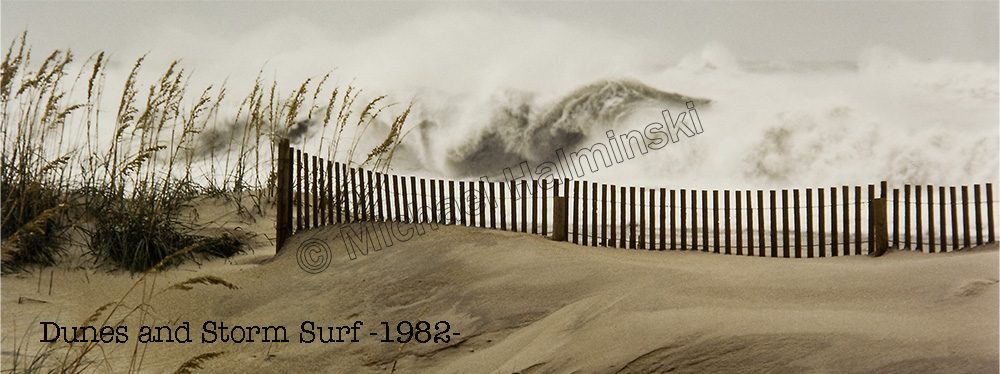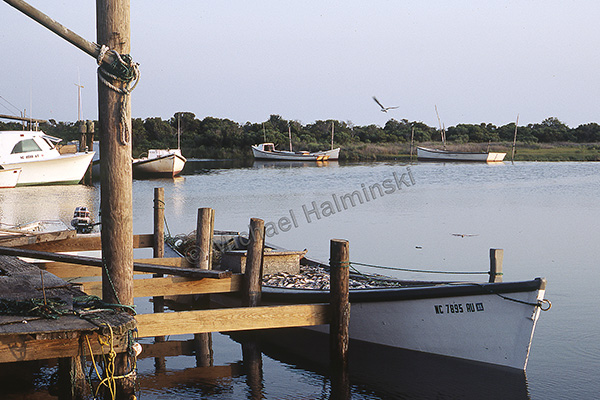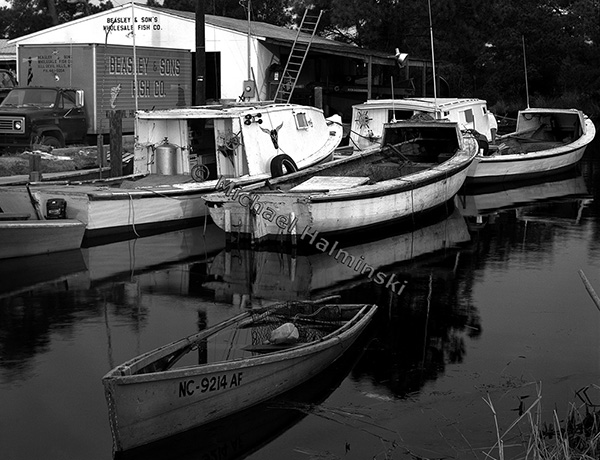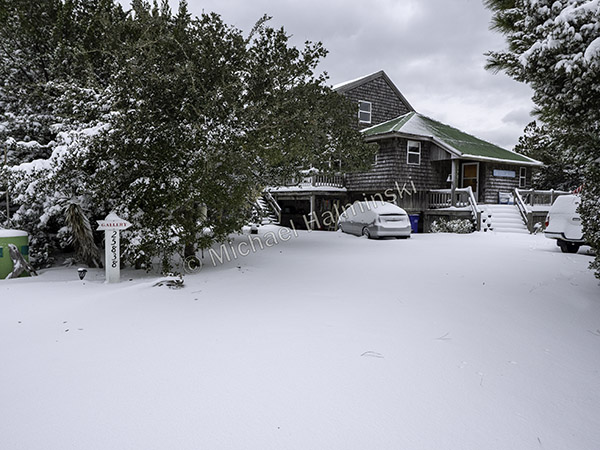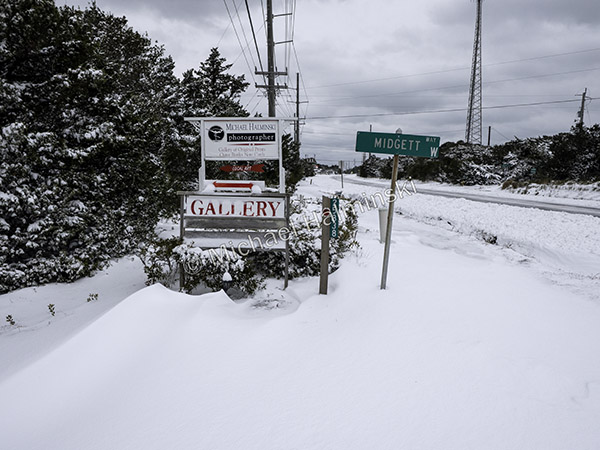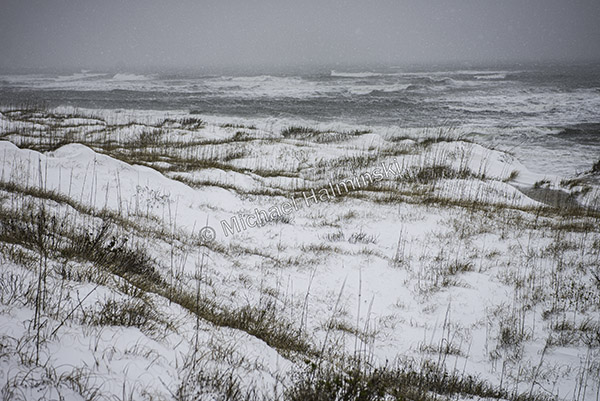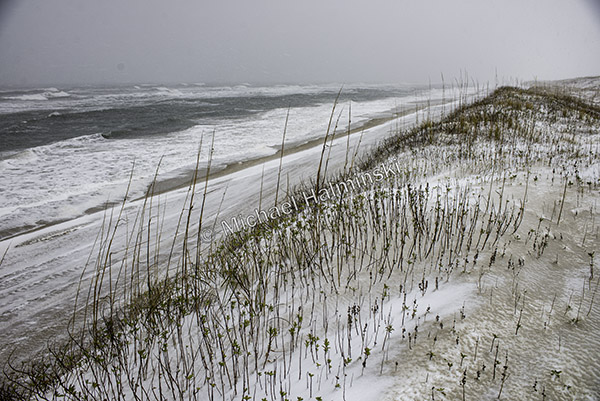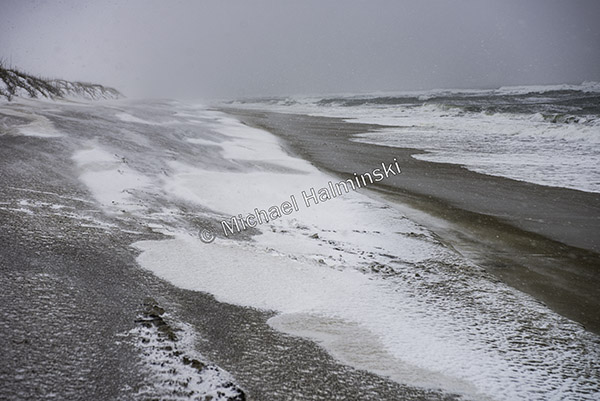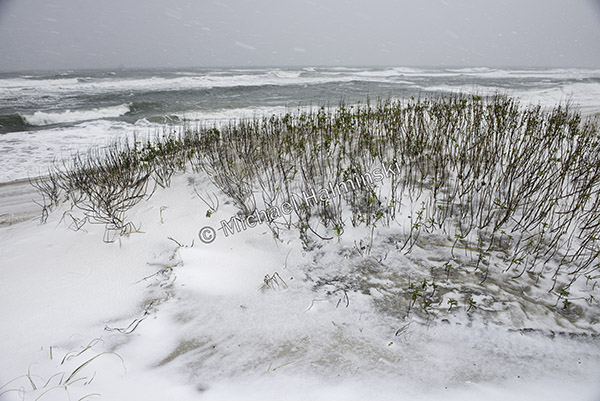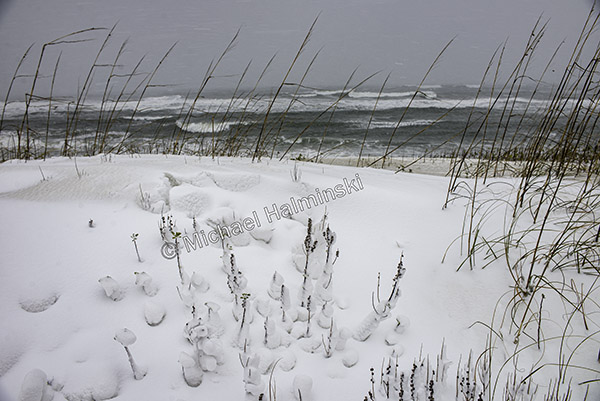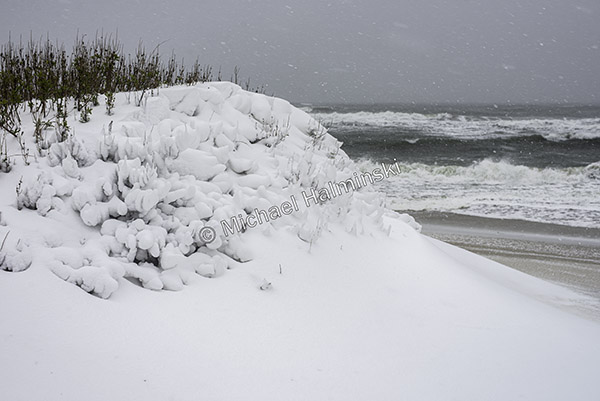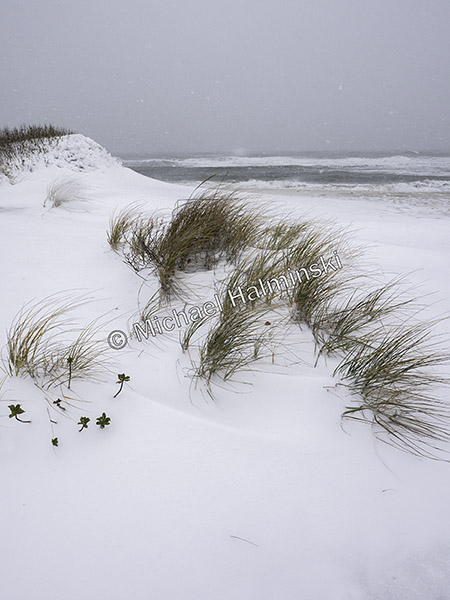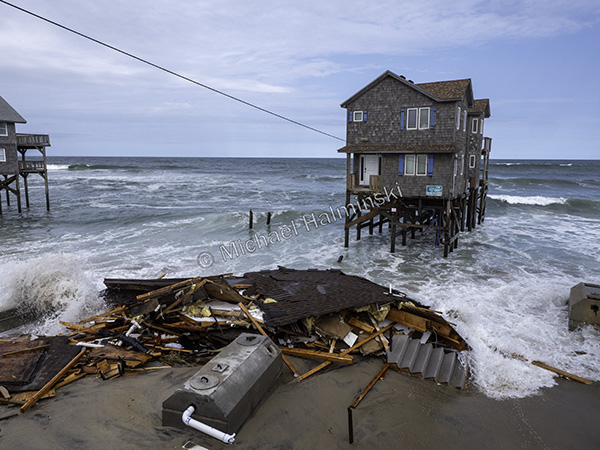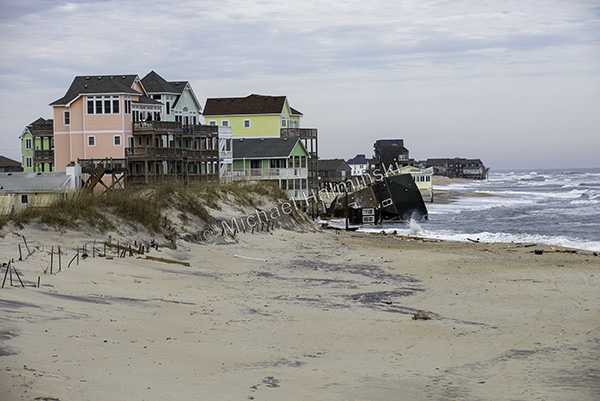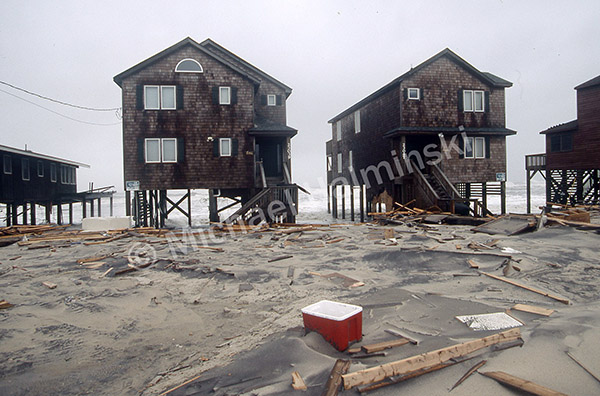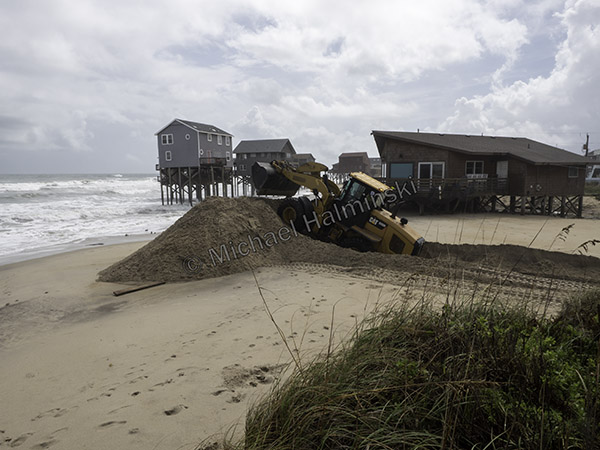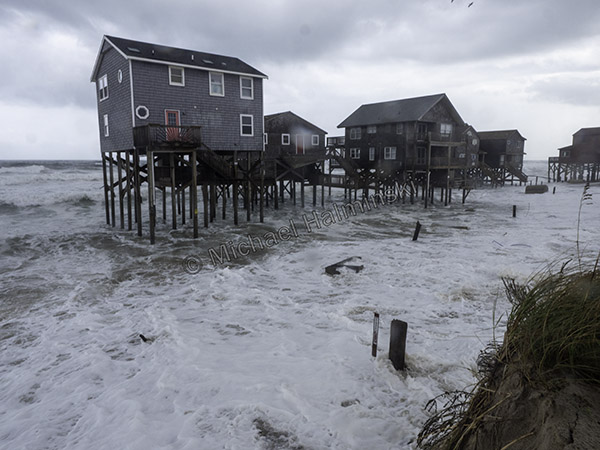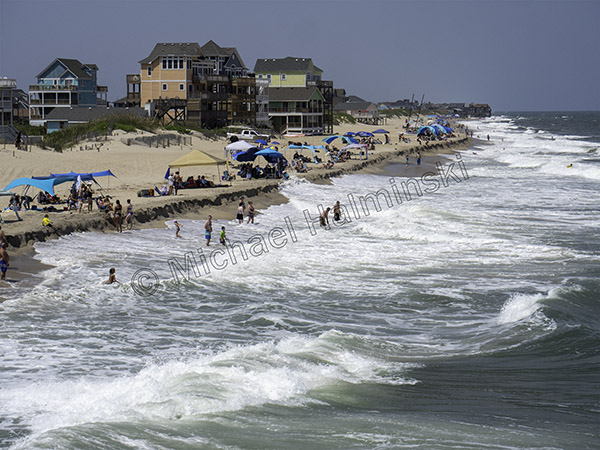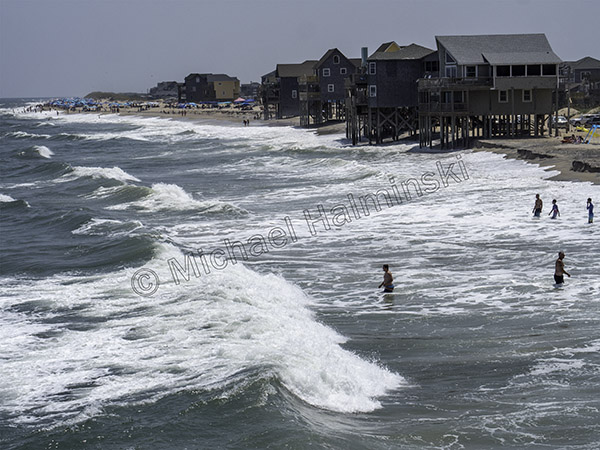Moving here decades ago, introduced me to a culture of commercial fishing. It was a livelihood that captured my attention. I spent lots of time watching newfound friends hauling in their catch, sometimes prolific, many times not. I hung out at the creek where locals kept their boats and packed fish. It became a passion for my photography.
Old wooden boats had beautiful lines, particularly the traditional shad boats, like these in the background of this 1985 photograph. I noticed the wooden workboats were being replaced by ones built of fiberglass.
Shooting this 1980 image, I was especially taken by four shad boats tied up at the Beasley fish house in Colington. I would see them frequently long hauling Pamlico Sound at Rodanthe. Originally designed to use sail power, most had been converted to using gasoline engines.
I revisited that same fish house two weeks ago. The shad boats were gone, the building in disrepair. Some fishing was still apparent but it was not the same. For me, the scene symbolized the decline of independent commercial fishing enterprises, and made me sad.
